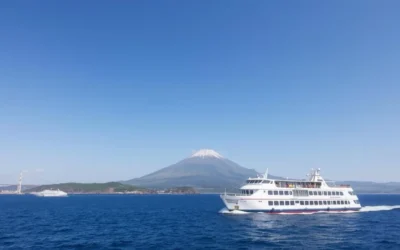✓ Accommodations✓ Flights✓ Rental Cars
Imagine exploring Japan’s largest national park, spanning across 11 prefectures and boasting over 3,000 islands in the Seto Inland Sea. Setonaikai National Park is a treasure trove of diverse landscapes and experiences that go beyond the typical image of Japan’s urban centers.
As you venture into this massive 900,000-hectare park, you’ll uncover a unique blend of natural wonders, historical sites, and cultural experiences. From mysterious sandbar paths that appear only at low tide to islands inhabited entirely by rabbits, the park offers an unforgettable island-hopping adventure.
This comprehensive guide will walk you through the top attractions and activities in Setonaikai National Park, helping you plan an unforgettable journey through Japan’s inland sea paradise.
Discovering Japan’s Largest National Park
Japan’s largest national park, Setonaikai, is a maritime marvel that will captivate your senses. With its vast inland sea and over 3,000 islands, it offers a unique experience that differs from the traditional image of a national park.
The Unique Geography of Setonaikai
Setonaikai National Park is a vast area of 900,000 hectares, including the Seto Inland Sea. The park encompasses a vast sea dotted with thousands of islands, creating a unique archipelago ecosystem. The contrast between the blue waters and green islands is breathtaking.
When to Visit: Seasonal Highlights
The time you visit Setonaikai National Park can greatly impact your experience due to its variety of seasonal highlights. Spring brings cherry blossoms, summer offers beach weather, autumn paints the islands in vibrant colors, and winter provides clear views with fewer crowds. Each season transforms the park in distinctive ways, so you can choose the best time based on your interests.
For instance, if you’re interested in cherry blossoms, April is the best month. For swimming and water sports, July and August are ideal. If you prefer fall foliage, October and November are perfect. For a peaceful exploration without crowds, consider visiting between December and February.
Must-Visit Islands in Setonaikai National Park
As you journey through Setonaikai National Park, you’ll discover a trio of must-visit islands that showcase the park’s diverse natural beauty and rich cultural heritage.
Shodoshima: Home to the Mystical Angel Road
Shodoshima, the second largest island in the Seto Inland Sea, is a treasure trove of unique attractions. The island is home to the sublime Angel Road, a natural sandbar that appears at low tide, allowing visitors to walk to three tiny neighboring islands. This phenomenon has become a romantic pilgrimage site, with locals believing that walking the road hand in hand with a loved one strengthens the bond between couples.
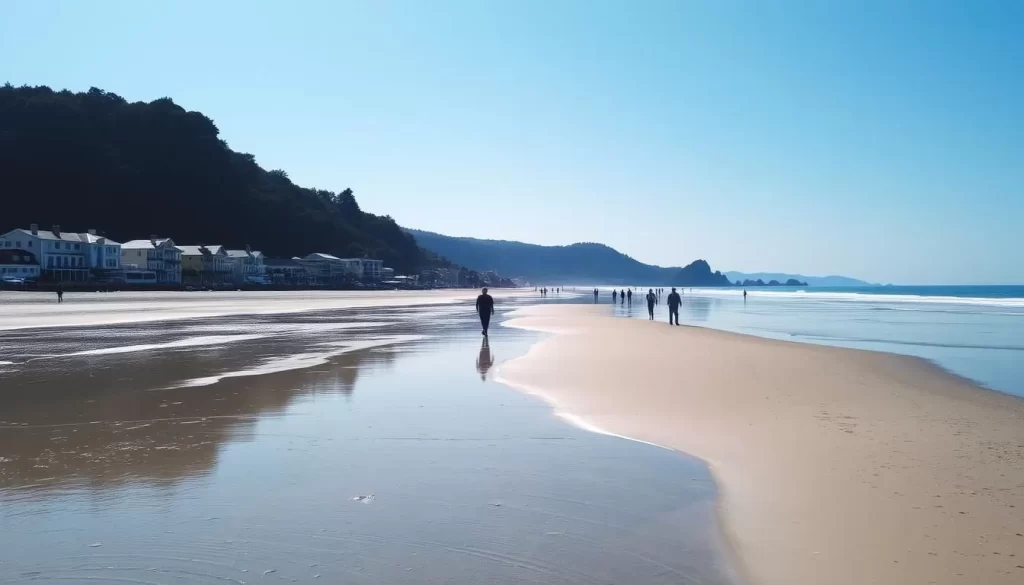
Megijima: Explore the Legendary Demon Cave
Megijima Island is famous for its Demon Cave (Onigashima), a site steeped in Japanese folklore. According to legend, the hero Momotaro (Peach Boy) battled demons here. Today, visitors can explore the cave and see whimsical demon sculptures, making it a fascinating experience for those interested in history and mythology.
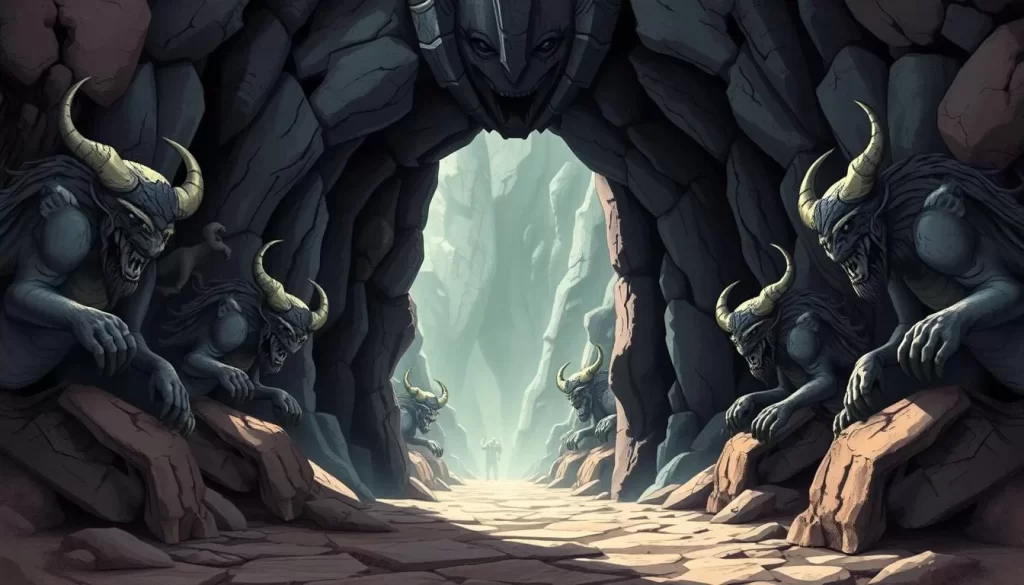
Awajishima: Japan’s Mythical Birthplace
Awajishima, the largest island in the Seto Inland Sea, holds significant cultural importance as Japan’s mythical birthplace. The island is home to Oishi Park, which boasts over 250 plum trees and offers spectacular panoramic views of the Kitankaikyo Strait and Osaka Bay, making it a photographer’s dream spot.
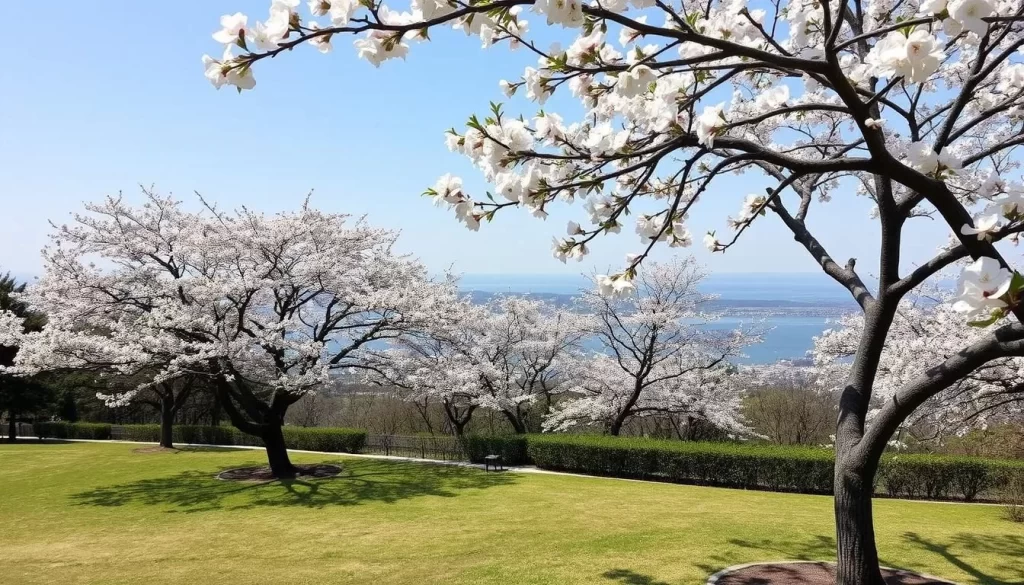
Each of these islands offers a unique blend of natural beauty, cultural history, and distinct attractions, providing visitors with a comprehensive experience of the Seto Inland region’s rich heritage.
Okunoshima: The Famous Rabbit Island
In the heart of the Seto Inland Sea lies Okunoshima, a small island with a big reputation for its friendly rabbits. This island, commonly known as “Rabbit Island,” offers a unique experience that is both heartwarming and thought-provoking.
Meeting the Fluffy Residents
Okunoshima is home to hundreds of friendly rabbits that roam freely across the island. Visitors can bring rabbit food, such as cabbage and carrots, and quickly find themselves surrounded by adorable bunnies hoping for a treat. This interaction creates a magical experience, especially for families and photographers. The island’s rabbit population has made it a social media sensation and a popular destination for animal lovers.
Discovering World War II History
Beyond its cute and fuzzy reputation, Okunoshima harbors a darker historical significance. During World War II, the Japanese government operated a secret chemical weapons facility on the island, producing poisonous gas in violation of the Geneva Convention. Today, visitors can explore the abandoned factory buildings and visit the Poison Gas Museum to learn about this somber chapter in history. The contrast between the island’s present-day residents and its historical past creates a thought-provoking experience.
The dual nature of Okunoshima as both a sanctuary for adorable rabbits and a historical war site makes it one of the most fascinating destinations within Setonaikai National Park. Visitors can enjoy the unique experience of interacting with the friendly rabbits while also reflecting on the island’s complex history.
Scenic Routes Through Setonaikai National Park
Exploring Setonaikai National Park by car is a surprisingly delightful experience. The park offers several scenic routes that allow you to enjoy its breathtaking scenery and unique landscapes.
The Shimanami Kaido: Cycling Across the Sea
The Shimanami Kaido is a 60km road that connects six of the park’s islands to Shikoku, offering a unique experience for both drivers and cyclists. As one of Japan’s most spectacular routes, it features dedicated bike lanes, rental services, and stunning ocean views throughout the ride.
Cycling the Shimanami Kaido lets you experience the park at a perfect pace – fast enough to cover significant ground but slow enough to appreciate the panoramic scenery of blue waters, green islands, and impressive infrastructure.
Ferry Hopping Between Islands
For those who prefer a more relaxed approach, the park’s extensive ferry network offers another scenic way to explore, with numerous services connecting the major islands and providing beautiful views from the sea. Ferry hopping gives you the flexibility to create your own island-hopping adventure, stopping at smaller, less-visited islands that often hold hidden gems and authentic local experiences.
Both the Shimanami Kaido and ferry hopping offer different perspectives of the national park – from above on the bridges and at sea level on the ferries – providing complementary ways to appreciate the scale and beauty of this maritime protected area.
Whichever scenic route you choose, you’ll be treated to constantly changing vistas of the Seto Inland Sea‘s island-dotted horizons, creating a journey that’s as memorable as any single destination within the Seto Inland Sea national park.
Natural Wonders and Viewpoints
As you explore Setonaikai National Park, you’ll discover an array of natural wonders and viewpoints. The park is home to diverse landscapes, from dramatic coastlines to lush islands, each offering unique scenery and sights.
Kankakei Gorge on Shodoshima
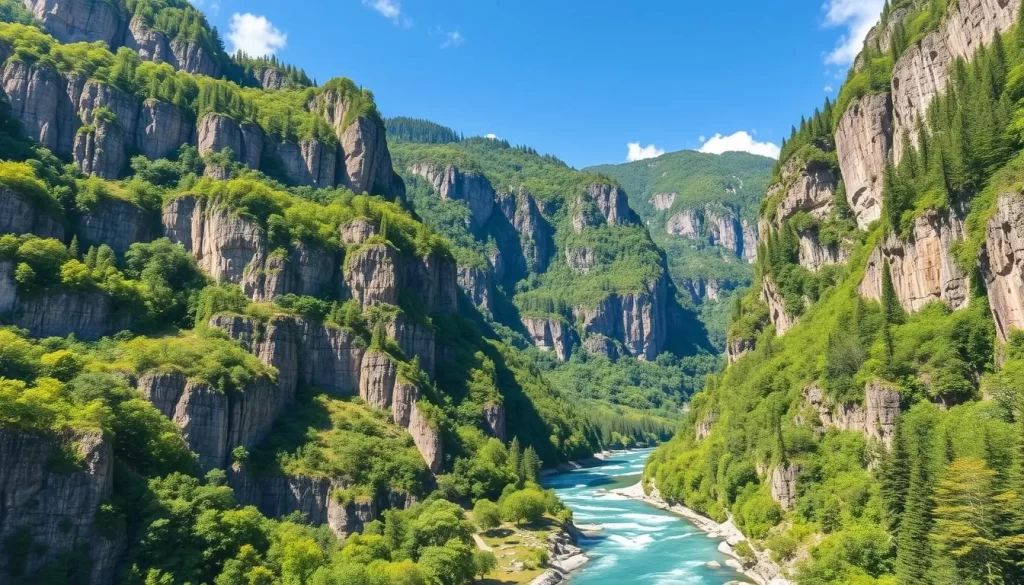
Kankakei Gorge on Shodoshima Island is one of Japan’s three most spectacular gorges, boasting dramatic rock formations, lush vegetation, and vibrant seasonal colors. The gorge is particularly stunning during autumn when the maple trees burst into fiery reds and golds. Visitors can enjoy both hiking trails and a ropeway that provides breathtaking aerial views of the ravine and the surrounding Seto Inland Sea.
Oishi Park’s Panoramic Views
Located on Awajishima Island, Oishi Park is one of the park’s premier viewpoints, offering panoramic vistas across the Kitankaikyo Strait and Osaka Bay. The park is also known for its over 250 plum trees that burst into delicate pink and white blossoms in late winter/early spring, creating a picturesque foreground to the sea views.
Walking on the Sea: Angel Road Phenomenon
Angel Road on Shodoshima is a natural sandbar that appears only during low tide, creating a walkable path across the sea floor to nearby small islands. This natural wonder has become a romantic spot where couples walk hand-in-hand, following the local belief that doing so will strengthen their relationship.
These natural wonders and viewpoints represent the perfect balance of accessible yet remarkable scenery that makes Setonaikai National Park so special. The combination of land and sea creates unforgettable landscapes, making it a must-visit destination for nature lovers and those seeking unique experiences.
Sustainable Tourism on Nakajima Island
The island of Nakajima offers a unique blend of natural beauty and eco-conscious initiatives. Located in Ehime Prefecture, it’s a model for sustainable tourism within Setonaikai National Park.
Eco-Friendly Initiatives and Green Mobility
Nakajima Island is pioneering eco-friendly initiatives, including its “Smart Island Model Project,” which addresses population decline and energy vulnerability. The island’s Green Slow Mobility vehicles are a highlight, offering visitors a leisurely way to explore the island at up to 20 km/h with zero emissions.
These solar-powered electric carts enhance your experience, encouraging a slower, more mindful way of exploring the island while reducing environmental impact in the Seto Inland Sea area.
Local Citrus Orchards and Farming Experiences
Nakajima is renowned for its citrus fruit orchards, with over 30 varieties grown in the island’s warm climate and gentle sea breezes. Visitors can participate in seasonal citrus harvesting experiences, connecting with local farmers and learning about traditional growing methods practiced in Ehime Prefecture for generations.
This not only supports the local community but also provides a unique insight into the island’s agricultural practices, making your visit to Nakajima Island a truly immersive experience during the summer months.
Conclusion: Planning Your Visit to Setonaikai National Park
Setonaikai National Park, spanning across the Seto Inland Sea, is a must-visit destination for any traveler seeking a unique blend of island adventures and scenic beauty. As you’ve discovered, this vast national park covers 11 prefectures and 900,000 hectares, offering a diverse range of experiences across its numerous islands.
When planning your visit, consider the best time to visit, which depends on your interests: spring for cherry blossoms, summer for beach activities, autumn for fall foliage, and winter for fewer crowds. With so much to explore, it’s essential to focus on specific areas of the park, such as the eastern section, central islands, or western area.
The park offers various transportation options, including ferries, rental cars, bicycles, and eco-friendly Green Slow Mobility vehicles. Accommodation ranges from traditional ryokans to modern hotels, with advance booking recommended during peak seasons. Whether you’re drawn to the park’s history, scenery, or unique phenomena like Angel Road, Setonaikai National Park promises an unforgettable experience.
As you plan your journey, remember that the Seto Inland Sea region has inspired artists and travelers for centuries. With its rich cultural heritage and breathtaking views, this national park is a true gem in Japan’s tourism landscape.
The above is subject to change.
Check back often to TRAVEL.COM for the latest travel tips and deals.

